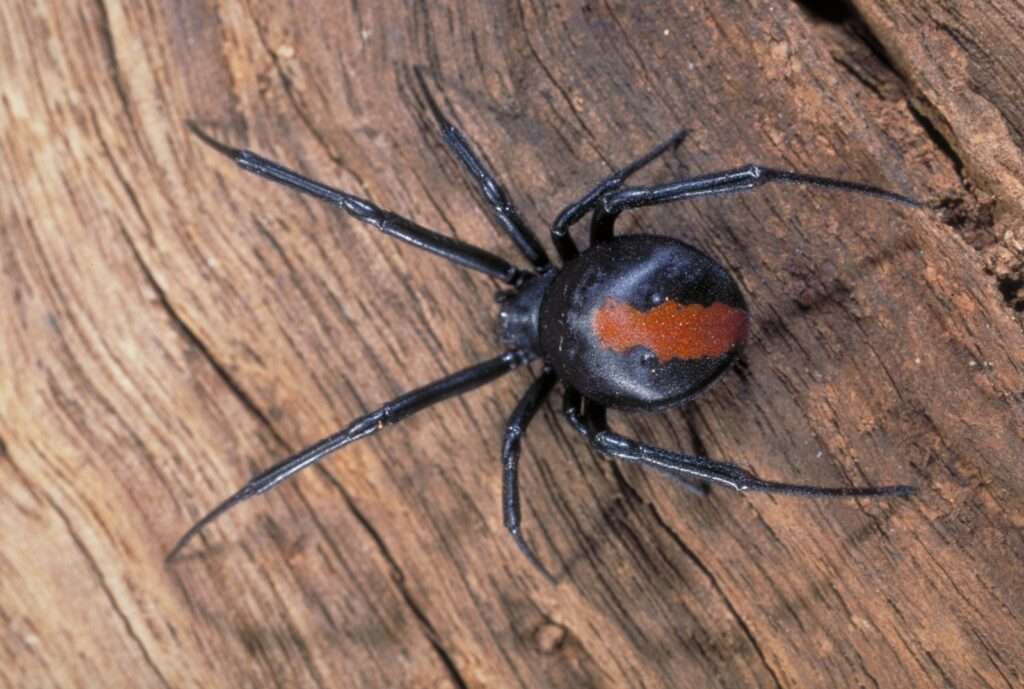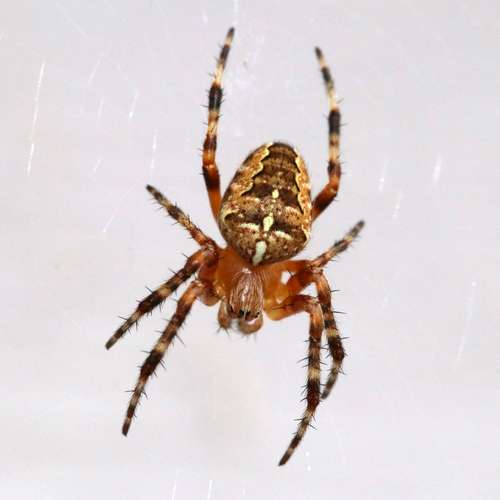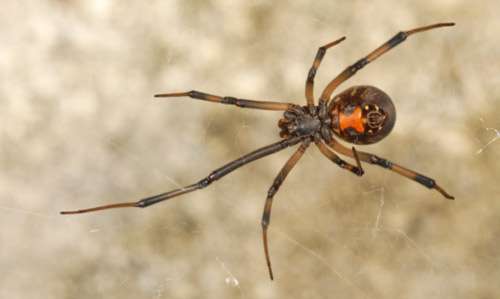
The redback spider (Latrodectus hasselti), also called the Australian black widow, is a species of extremely venomous spider that is thought to have originated in nearby Western Australian or the South Australia deserts. It is now widespread throughout Australia, Southeast Asia, and New Zealand, with colonies in places other than Australia. It belongs to the widely distributed genus Latrodectus, which includes widow spiders. The average body length of a female is around 10 mm (0.4 in), however the male is substantially shorter at only 3–4 mm (0.1–0.26 in).
Over the dorsal side of its abdomen, the prominent red stripe running gave rise to the nickname “redback.” Other popular names for this spider are the red-spot, red-stripe, jockey, Kapara, Murra-ngura, and Kanna-jeri.
Morphology
The mature female redback has a body that is about 1 centimeter (0.4 in) length, with slender legs, the first pair of which is longer than the others.
Females
The spherical abdomen has a deep black color with a red longitudinal stripe on top and a scarlet streak in the shape of an hourglass on the underside. Females can have all-black abdomens or partial patterns. Black in color and slightly smaller than the abdomen is the cephalothorax. The grey and dark-spotted redback spiderlings get a little bit darker with each molt. Female juveniles have additional white patterns on their abdomens. Potential predators may be scared away by the striking scarlet red coloring. Two venom glands are present on each of a spider’s tiny fang-equipped chelicerae.
Males
The male redback is smaller than the female and is light brown colored having markings of white color on the upper surface of the abdomen and pale marking underlined. Its length is 3-4 mm (0.12-0.16 in). Steatoda capensis, another Australian species with a comparable build, has been dubbed the “false redback spider” because of its uniform black (or plum) coloration and lack of the red stripe.
Feeding Habits
Redback spiders typically hunt on insects, but if a larger animal gets caught in the web, it can be captured, including male trapdoor spiders, king crickets, and tiny lizards. Prey theft is another frequent occurrence, with huge females snatching stored food from other spiders’ webs.

Habitat
Australia-wide, redback spiders can be found living nearly anywhere as long as there is enough food, a protected web site, and temperatures suitable for reproducing. They are particularly prevalent in disturbed and metropolitan regions where people live. Redback spider webs are made consisting of an upper retreat area that is twisted and funnel-shaped, from which vertical, sticky capturing threads extend to ground attachments. The Redback Spider prefers to build its webs in dry, protected areas near human settlement, such as among rocks, in logs, garbage piles, shrubs, toilets, or sheds. In the winter, redback spiders are less frequent.
Impact on Humans
Positive
These spiders are predators of terrestrial insects, however they don’t seem to have a significant enough impact on insect populations to benefit people.
Negative
One of the most dangerous spiders is the redback in Australia. Larger females frequently bite and envenomate visitors when disturbed. When temperatures are at their maximum (the summer months and the late afternoon) and spider activity is at its peak, are when bites frequently happen. The animal’s teeth are used to inject the venom, which is produced in the cephalothorax. The amount of venom that redback spiders inject can be controlled, and “dry” bites are not unheard of. Depending on how much is injected, the primary toxin in the venom, -latrotoxin, has varied effects on people.
Lifespan
Male Redback spiders have a lifespan of roughly 6-7 months compared to females’ 2-3 years. Male lifetime is shortened by male-to-male competition, sexual cannibalism at the time of mating, and between female and male size difference.
Requirements for Keeping as Pet
Food
Cockroaches, crickets, and other live crawling insects are the best options. Although feeding once a week is advised, baby spiders may need to eat more frequently as they develop. If your spider is not in need of food, remove live insects from its container.
Water
Redbacks don’t need a lot of water. Once a week at most, lightly mist spray the spider’s web; if necessary, it will drink the droplets. Redbacks dislike humid, wet weather, so watch out for overwatering.
Enclosure
The enclosure should be impenetrable to escape attempts and provide enough room for the spider to weave its web and set traps. Larger enclosures will help the spider to spin bigger webs, although a small terrarium or big jar will do. In the absence of other options like flat bark or tiny hollow logs, redbacks will frequently build their shelters on the enclosure’s ceiling. However, emergent spider-lings can get through normal fly mesh, hence finer mesh is needed if breeding this species. Large ventilation holes should be closed with mesh.
Temperature
Although this species can survive in a fairly wide range of temperatures (10 to 30°C), it thrives at temps about 20°. Avoid being exposed for an extended period of time to severe temperatures.
Table





